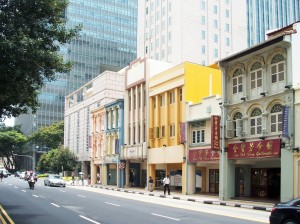
Singapore shophouses continue to shine as an asset or property investment despite the lower transaction volume.
According to a Colliers International report in March revealed that based on data from URA’s Real Estate Information System (REALIS) as of 16 February, a total of 112 units were sold in 2014 compared to the 206 deals seen in the previous year.
The consultancy explained that sales of shophouses have fallen significantly due to a stalemate between buyers and sellers saying latter are not in a hurry to sell given the rarity and limited supply of these properties, unless a buyers were to offer a large premium. On the other hand, buyers have generally adopted a wait-and-see approach in light of the sluggish real estate market, the consultancy said.
Moreover, many owners are individuals who have been operating small businesses in these premises like medicine halls, hardware stores, as well as mom-and-pop stores. Therefore, they could be reluctant to dispose these units for sentimental reasons. Instead of selling, these owners are more willing to rent out this valuable asset for recurring income, further limiting the availability of shophouses for sale.
Given the tight supply, the volume of transactions is usually less than other conventional strata-titled office units and retail shops. In fact, annual sales of shophouses only averaged 290 units in Singapore from 2009 to 2013.
Despite the fewer sales, the median price of shophouses across the city-state remained
largely stable. Generally, it hovered in the region of S$750 per sq ft based on the property’s land area during Q1 2000 to Q4 2006.
It subsequently ranged from S$950 to S$1,300 per sq ft between Q1 2007 and Q3 2009 in spite of the 2008 Global Financial Crisis. It then surged from S$1,455 per sq ft in Q4 2009 to S$2,754 per sq ft in Q4 2013, representing a gain of 89.3 percent over four years. The median price of shophouses then climbed by 37 percent on an annual basis in 2014 to reach a record high of S$3,772 per sq ft in the last quarter of 2014.
“The price escalation reflects a growing interest by companies who have bought self-occupied shophouses in order to have more control over occupancy costs in view of rising rents in the office market over the years. For business owners, the investment and redevelopment potential of shophouses also provides flexibility for expansion and potential capital gains,” said Colliers International.
Additionally, shophouses gradually became more sought-after by investors thanks to the healthy leasing demand from start-ups, design houses, architectural firms and publishing companies.
“Indeed, the median rent of shophouses has also been on an uptrend over the last five years. Prior to 2012, the quarterly median rent generally remained below S$4 psf per
month. In particular, the median rent of shophouses hit S$4 psf for the first time in Q1 2012 and has since risen 35.5 percent to a record high of S$5.42 psf in Q4 2014.”
In terms of net yields, it typically ranges from 2.5 percent to 3.0 percent for freehold shophouses, while the average yield for leasehold properties is generally around 3.5 percent.
“The rare and vernacular shophouse steeped in history continues to generate a steady, if not increasing, income stream and remains in demand in modern day Singapore where even the man on the street appreciates the nostalgic throwback to Singapore’s past,” Colliers concluded.
Nikki De Guzman, Editor at CommercialGuru, wrote this story. To contact her about this or other stories email nikki@propertyguru.com.sg.
Related Articles:
Amoy Street shophouses up for sale